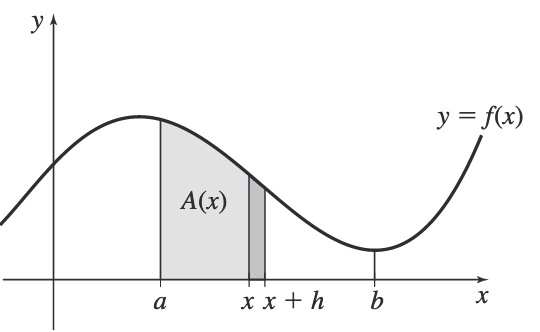Fundamental Theorem of Calculus
The Connection Between Integral and Differential Calculus
Consider a function
If we add a thin strip to the right of width

Since it's nearly rectangular, the area is approximately
For small values of
So
So the derivative of the area under the graph is equal to the original function.
Fundamental Theorem of Calculus, Part 1 (FTC 1)
Theorem
Or, more concisely
So we call
Example
If
then
Constant of Integration
Theorem
If
Since constants differentiate to 0, there are infinitely many antiderivatives.
Fundamental Theorem of Calculus, Part 2 (FTC 2)
Theorem
Notation
Sometimes, the difference